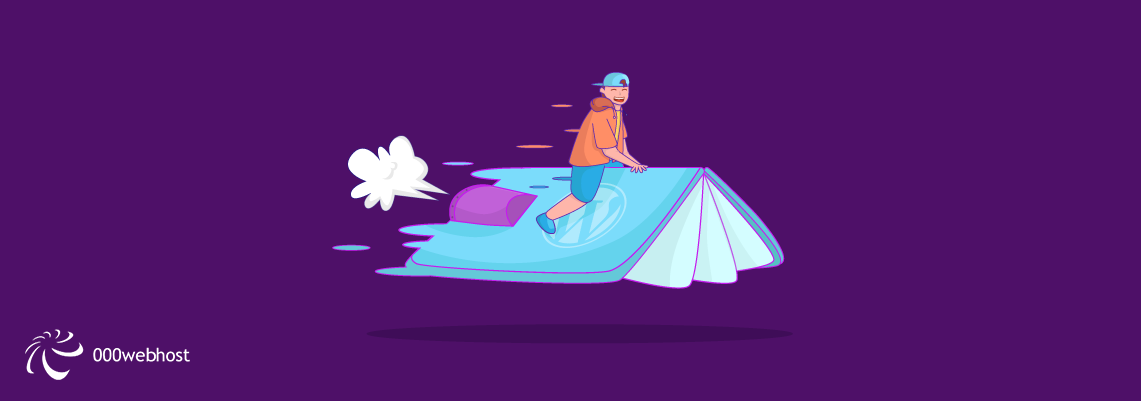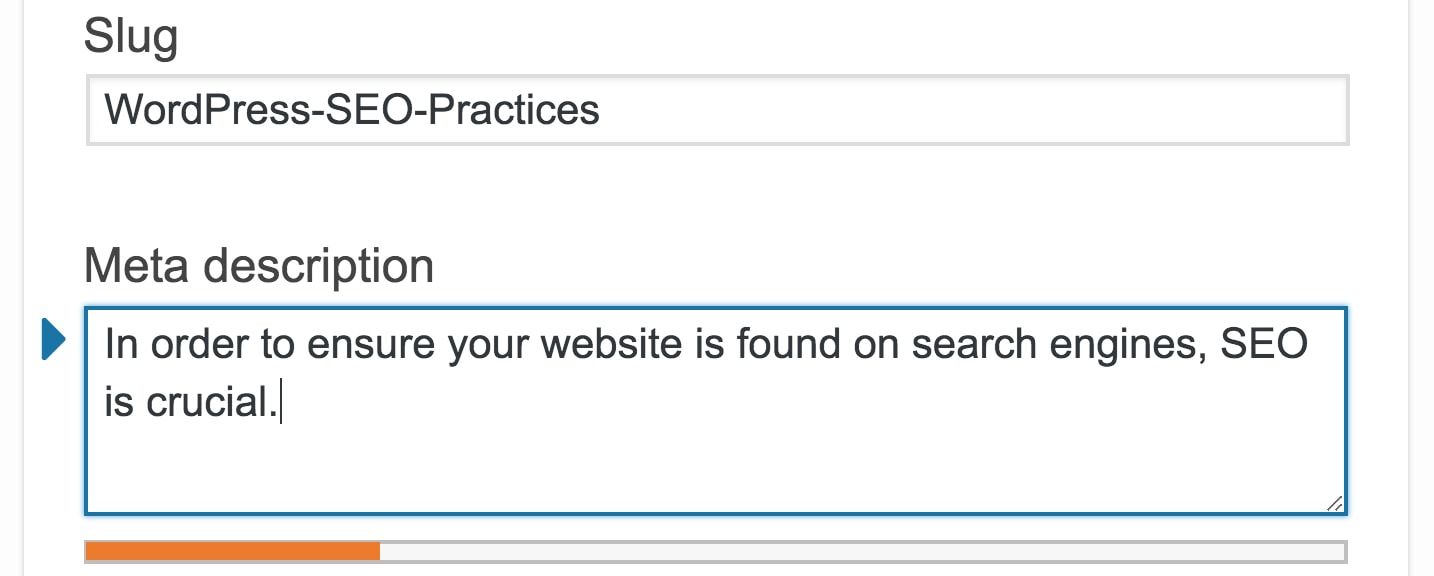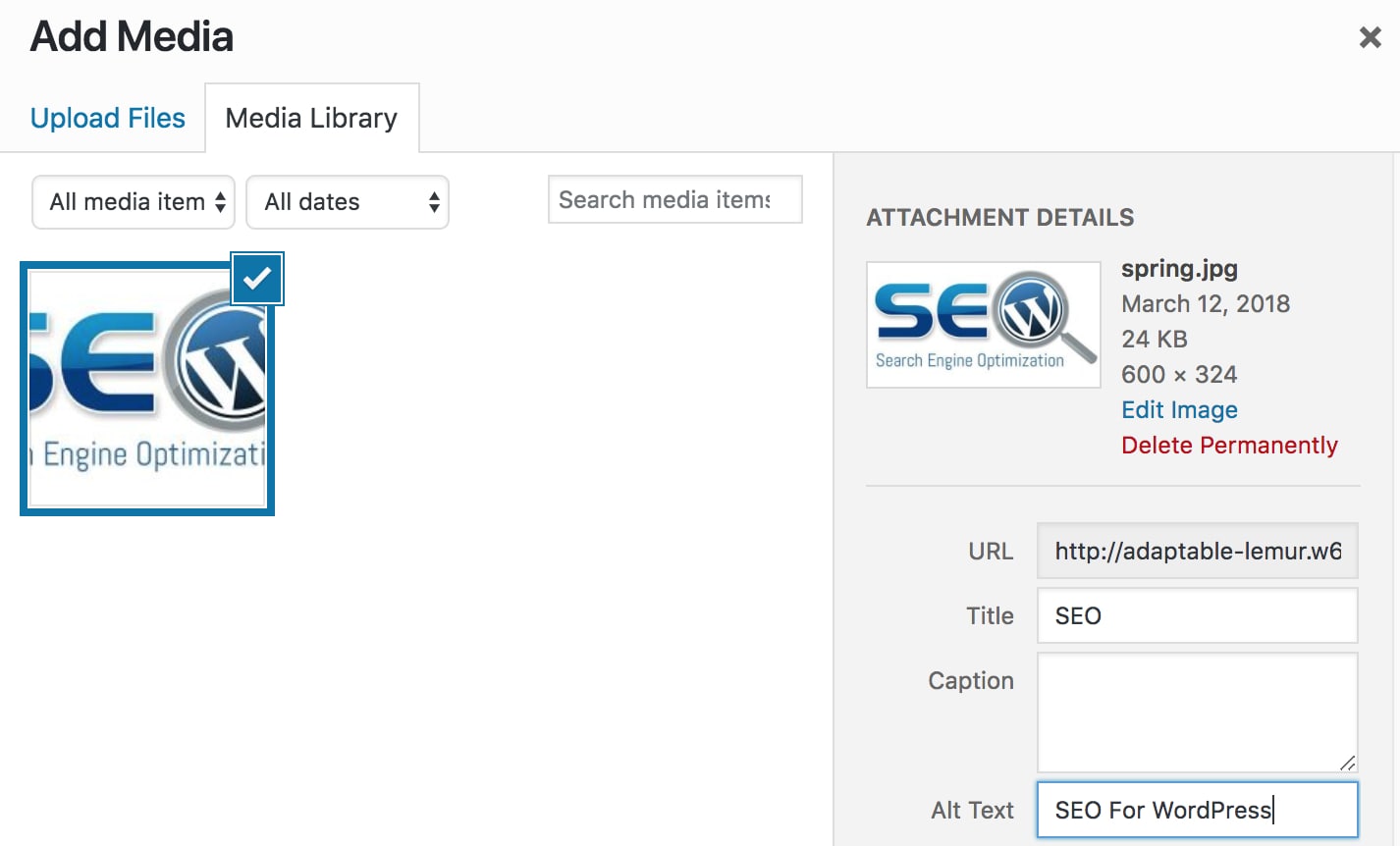You may already have a gorgeous, informative, and well-structured website. However, all of this will count for little if it doesn’t rank highly in search engines like Google. To achieve that, you’ll need to follow a few WordPress SEO tips. These techniques will communicate to search engines that you offer useful information that can be presented to relevant searchers.
Fortunately, WordPress takes much of the hassle and guesswork out of implementing key WordPress SEO tips. The platform makes it easy to configure almost every aspect of your site (including its images, written content, URLs, and more) to appeal to search engines. There are also a number of invaluable SEO plugins that can help you out.
In this article, we will provide an overview of what SEO tips for WordPress are, and explain why they are so important. Then we’ll discuss 15 WordPress SEO tips that can help your website climb the Google rankings. Let’s get started!
An Introduction to Search Engine Optimization (SEO)
As the name suggests, Search Engine Optimization (SEO) refers to the process of improving the visibility of a website (or web page) in search engines. This includes implementing keywords, which are words or phrases searchers might type into a search engine when looking for content like yours. However, that’s not all there is to SEO, and simply spamming your website with keywords will often do more harm than good. In order to climb the rankings, you also need to create quality content and maintain an outstanding user experience. You also need to make it easy for search engines to ‘crawl’ your site.
Search engines work by sending out ‘crawlers’– automated bots that search the web and gather data for the search engine to compile. These crawlers (such as Googlebot) use complex algorithms to determine what your site is all about, and to understand how useful it might be to searchers. Your pages’ ultimate search engine rankings will be dependent on the results.
Certain WordPress site seo tips make it more likely that crawlers will rank your site highly, such as a clear sitemap, relevant keywords, and a lack of duplicate content. On the other hand, detrimental factors (broken links, spam, slow loading times, etc) can bring your rankings down. Solid WordPress SEO tips involve making it easy for the crawlers to find what they need, and ensuring that the focus of your site and content are clear.
Although it is possible to improve your rankings by investing in paid ads via programs such as Google Ad Words, you simply can’t afford to ignore the fundamentals of SEO. Putting them to use will help give your web pages the exposure they deserve. Now that we’ve covered what SEO is and why it’s so important, let’s take a look at some crucial WordPress SEO tips for improving it on your WordPress site.
15 WordPress SEO Tips to Boost Your Search Engine Rankings
Regardless of whether your site is designed for your business, as a personal blog, or with some other goal entirely, the following WordPress SEO tips can drastically improve your chances of ranking highly for relevant keywords. Let’s dive right in!
1. Choose a Reliable Hosting Provider
One of the most crucial WordPress SEO tips is selecting a quality hosting provider. This is because your host affects factors like site uptime and loading speeds, which are key indicators of your site’s reliability.
A second reason web hosting is important for SEO is location. Search engine crawlers will determine the location of your site via a number of indicators, including its IP address. They do this so they can show your site as a result to searchers looking for nearby information or services. The IP address assigned to your site depends on the location of the server where your site is hosted.
With 000webhost, for instance, you can guarantee the speed and stability your website needs to maintain excellent SEO:
Our service delivers a 99% uptime guarantee and excellent performance. These two things are key if you want to implement the most effective WordPress site SEO tips.
2. Optimize Your Permalink Structure
Once you’ve settled on the right web host, you can set about implementing other SEO tips for WordPress. A good place to start is with your permalink structure. A permalink is a URL that is meant to remain unchanged (i.e. a ‘permanent link’), and each page and post of your website will have one.
There are a number of ways you can configure permalinks to enhance your SEO. For example, you can incorporate long-tail keywords (which are key phrases made up of three or more words). Long-tail keywords are useful because, due to their length, they can be used to convey specific information about what your content offers. Plus, it’s usually easier to rank highly for long-tail keywords, since they are less competitive.
When setting up your site, you’ll want to pick a permalink structure that will be used for every page on your site. You can do this by navigating to Settings > Permalink in your dashboard. For the best SEO results, you’ll want to choose a permalink structure that includes the name of the post in question. This will make it even easier for crawlers, as well as human visitors, to get a clear picture of what its content is about.
3. Use a Dedicated SEO WordPress Plugin
The next of our WordPress SEO tips involves finding a quality SEO plugin. By far the most popular plugin in this department is Yoast SEO, and we strongly recommend using it. It’s lightweight, reliable, feature-rich, and extremely easy to learn:
When you install and activate the plugin, you will see a new Yoast SEO menu whenever you’re working on a post. This will give you a clear outline of what actions you need to take on your post to improve its SEO, via an intuitive traffic light system. Items indicated in red and yellow are areas that need to be addressed, if you want to enhance your content’s SEO. For example, if you haven’t included any images in a post, that issue will be identified in red. Once it is rectified, it will display as green (a good result) instead.
Yoast SEO also includes many other helpful features. There’s a snippet preview that enables you to see how your pages will look in search engines, the option to specify focus keywords, analytic tools, and more. All in all, Yoast SEO is an absolute must if you want to ensure that every aspect of your site is properly optimized.
4. Choose an SEO-Friendly Theme
- Interface is just one example of an SEO-friendly WordPress theme.
When choosing a WordPress theme, aesthetics will naturally play a crucial role in your decision making. However, it’s arguably just as important to consider the SEO merits of a theme. This is particularly true if your website is meant for business applications, as you’ll naturally want to increase its pool of potential customers.
There are several hallmarks that distinguish an SEO-friendly theme from the rest of the pack. These include:
- A responsive design, ensuring that it looks and functions well on mobile devices.
- Fast upload speed, which will also reduce bounce rates.
- Strong social media integration, which will make it easier for visitors to share info about your site.
Although this is one of the more technical SEO tips for WordPress, it’s also important whether your theme’s coding adheres to the best practices for SEO. Checking that a theme’s coding is up to par will prevent you from running into issues that could cause downtime, broken links, and (as a result) a negative effect on your search rankings.
5. Avoid “Black Hat” SEO Practices
As we touched on in the introduction, it’s tempting to simply spam your website with a particular keyword in order to rank highly for that search term. However, this constitutes a ‘black hat tactic’: an aggressive, underhanded practice designed to trick search engines. You may have encountered websites with white text on a white background (hidden text), or that use underhanded link redirects. These are also black hat tactics, and they frequently backfire on their users.
To avoid inadvertently using a black hat tactic, it’s smart to familiarize yourself with what they are. A good way to start is to browse through websites listing the more commonly-used black hat practices (which include stuffing alt-tag keywords, using misguiding link baiting, etc). You should also consider reading through the webmaster guidelines of Google or Bing to find out what SEO tips for WordPress they recommend avoiding.
Finally, using a solid WordPress SEO plugin such as Yoast SEO proves invaluable when it comes to avoiding black hat tactics. This is because the plugin will list the ways you can improve your SEO legitimately, and avoid recommending any WordPress SEO tips that could get you into trouble.
6. Write Quality, Keyword-Rich Content
The meat and potatoes of solid SEO, as well as a strong website overall, is quality content. Both crawlers and human readers alike will be able to spot articles that have been over-stuffed with keywords or copied from another source. SEO-friendly content is unique, adds value, focuses on a specific topic, and is highly shareable. By creating this type of content, you’re much more likely to keep readers coming back for more. This, in turn, will indicate to crawlers that your site is worth ranking highly.
Of course, keywords are still a vital tool at your disposal, as long as they aren’t overused. Although you may be able intuit what keywords a user is likely to type into a search engine when looking for content like yours, it pays to conduct research into the popularity and competitiveness of various terms. For example, using a key phrase like “wood varnish” often yields less conversions than a long-tail keyword such as “wood varnish for patio area”, since the latter is more specific and less competitive. Fortunately, there are plenty of handy keyword planning tools available to help you choose the optimal terms for your content.
7. Regularly Use Internal and External Links
No WordPress SEO tips are complete without a discussion about external and internal links. External links (those that point to sites outside your domain) give search engines a clearer idea of your site’s niche, and help to build credibility. Naturally, whether your links have a positive effect will depend on whether they’re trustworthy and relevant. Internal links are also important, since they give crawlers a clearer picture of the structure and hierarchy of your site.
It’s crucial to use optimized anchor text for both internal and external links. By using your key terms as anchor text, and linking only to reputable and relevant sources, you help crawlers understand the kind of content you provide. Remember that, although it may be tempting, simply spamming your content with internal and external links constitutes a black hat tactic. Each link you use should have a clear purpose.
8. Optimize Your Meta Description and URL Slug
The next of our SEO tips for WordPress is a behind-the-scenes technique. When browsing Search Engine Results Pages (SERPs), you may have noticed that information is usually displayed in a particular format. You’ll see a title and a URL, and then a snippet of text from the content itself. Both the text (meta description) and the end of the post’s URL (the slug) can be used to improve your SEO:
A quick and easy way to do this is, once again, to use the Yoast SEO plugin. After downloading and installing the plugin, you will be able to navigate to a Yoast SEO menu for any blog post you are working on. There, you can customize the post’s slug, and add a meta description. For best results, you’ll want to use your post’s primary keyword in both.
9. Make Your Content Shareable
In order to grow your readership and climb the search engine rankings, it’s vital to make sure your content is as shareable as possible on social media. The more exposure your content has, the more likely it is to be linked to. Having these kinds of ‘backlinks’ indicates your content’s relevance to the crawlers. This factor also reinforces the importance of creating quality content, as readers are much more likely to share pieces that are valuable, unique, and entertaining.
You can improve the chances of your content being shared by:
- Researching what kind of content in your niche is most often shared.
- Adding social sharing buttons to your website.
- Implementing eye-catching headlines and images.
- Considering what topics are trending, and seeing if you can associate them with your content.
Of course, in order for your content to be shared easily, it first needs to be found. As such, implementing the WordPress SEO tips we’ve already discussed (using long-tail keywords, links, and properly-structured permalinks, for example) will also improve the chance that your content will be shared.
10. Optimize Your Images
- WordPress makes it easy to improve your SEO via images.
Aside from making your site more visually attractive, images can be assigned text that helps to optimize your posts and pages. This text can be in the form of captions, the title of the image, and ‘alt tags’ (which are used to describe what the image is to readers with a visual impairment).
Fortunately, WordPress makes this process simple. When you click on the Add Media button in WordPress, navigate to your Media Library, and select an image, you will be able to view that image’s attachment details. There, you can edit the image’s title, caption, alt text, and description to implement key phrases strategically.
Remember, images that are bulky or of poor quality can negatively affect your SEO. Therefore, you’ll also want to ensure that they are properly compressed and configured. There are several WordPress plugins available that can help immensely in this area.
11. Create an XML Sitemap
XML sitemaps are extremely useful for communicating crucial information to bots about how often your site updates and changes. You can also add <priority> tags to your XML sitemaps, to show crawlers which pages are more important than others. For instance, if a user were looking to buy tools from your online hardware store, they’d gain more useful information from your Home and Product pages than from your Contact Us page.
Yoast SEO has a dedicated function specifically for generating XML sitemaps (many other SEO-related plugins offer this feature as well). Once you’ve created one, you can submit it to Google Search Console. This will enable you to view crawling and indexing data, which you can then use to tweak and improve your search terms and other SEO strategies accordingly. Many other SEO-related plugins offer this feature as well, since sitemaps are one of the most important SEO tips for WordPress.
12. Use Google Analytics
Google Analytics can serve as an excellent tool for assessing the effectiveness of the WordPress site SEO tips you’ve implemented. You can use it to view organic (non-paid) traffic metrics, as well as the kind of search terms that are leading visitors to your site. What’s more, Google Analytics provides a useful overview of performance, clearly indicating which pages are loading too slowly.
Setting up Google Analytics on WordPress is a simple process, which is outlined in the following video:
After completing the setup, you can navigating to Reporting > Acquisition in your dashboard, and then select the All Reporting section. This will give your site a general SEO health check, by showing how many visitors are reaching your page via organic searches. Plus, you’ll get access to more refined analytics that track popular pages, effective search terms, and more.
13. Republish Old Content
If you have old blog content that is popular, shareable, and still relevant, it makes sense to republish it. This is especially true if you are unable to put sufficient time and energy into writing a new post along the same lines. However, it’s important to stress that simply copying, pasting, and publishing the post is not advisable.
Instead, you’ll want to take the time to properly update your old blog posts. This will involve fleshing them out with updated information, adjusting the focus where required, and (of course) adjusting the publication date and time accordingly. You should also be sure to go through the blog you are republishing and check that every link still leads to relevant (and working) pages.
A final tip to implement when republishing old content in line with our SEO tips for WordPress is to ensure that any old comments are removed. Those comments may refer to aspects of the piece that were not updated, which can make your content appear dated.
14. Fix Broken Links Regularly
Nothing quite indicates a site’s unreliability like broken links. Naturally, both human visitors and crawlers are not going to value your pages highly if it includes links to nowhere. Fortunately, the WordPress community offers a number of ways you can detect and remedy broken links.
By using a plugin like Broken Link Checker, you can easily monitor links, detect the ones that no longer work, and remove or replace them. This is one of the most crucial SEO tips for WordPress on any site. After all, web pages go down or are moved every day.
It’s also worth bearing in mind that broken permalinks may occur as a result of issues with your site’s .htaccess file. By choosing a quality hosting provider, such as 000webhost.com, you can get easy access to your website’s core files to fix this kind of problem.
15. Boost Your Site’s Loading Times
Finally, we reach the last of our WordPress SEO tips. In addition to increasing your bounce rates, slow loading times can wreak havoc with your site’s SEO. This is because crawlers like Googlebot factor loading speed into page rankings. Ideally, your pages should always load in under 2 seconds.
To get a clear indication of your site’s current loading time, you can use a site like Pingdom Tools. If the results are less than stellar, there are a number of things you can do to improve them, such as:
- Compressing your images.
- Switching to a more lightweight theme.
- Removing excessive ads.
- Using a Content Delivery Network (CDN).
Choosing a viable web host can also improve your loading times. 000webhost, for example, couples rapid loading with reliable uptimes, leaving you with more time to concentrate on other WordPress SEO tips.
Conclusion
If your website isn’t on the first or second page of relevant search engine results, it might as well be invisible. Fortunately, the process of maximizing your site’s SEO is easy and achievable when you follow a few simple WordPress SEO tips. Although your site may not reach the coveted number one position, implementing each of the above tips will drastically improve your chances.
The SEO tips for WordPress that we have covered are each important parts of your overall SEO strategy. These SEO tips for WordPress will help you make things as easy, reliable, and relevant as possible for both your readers and search engine crawlers. If you ensure that your site runs quickly and efficiently, implements well-researched keywords, and avoids black hat tactics, you’ll be ranking well in no time.
Do you have any other WordPress SEO tips to share with fellow readers? Let us know about them in the comment section below!













